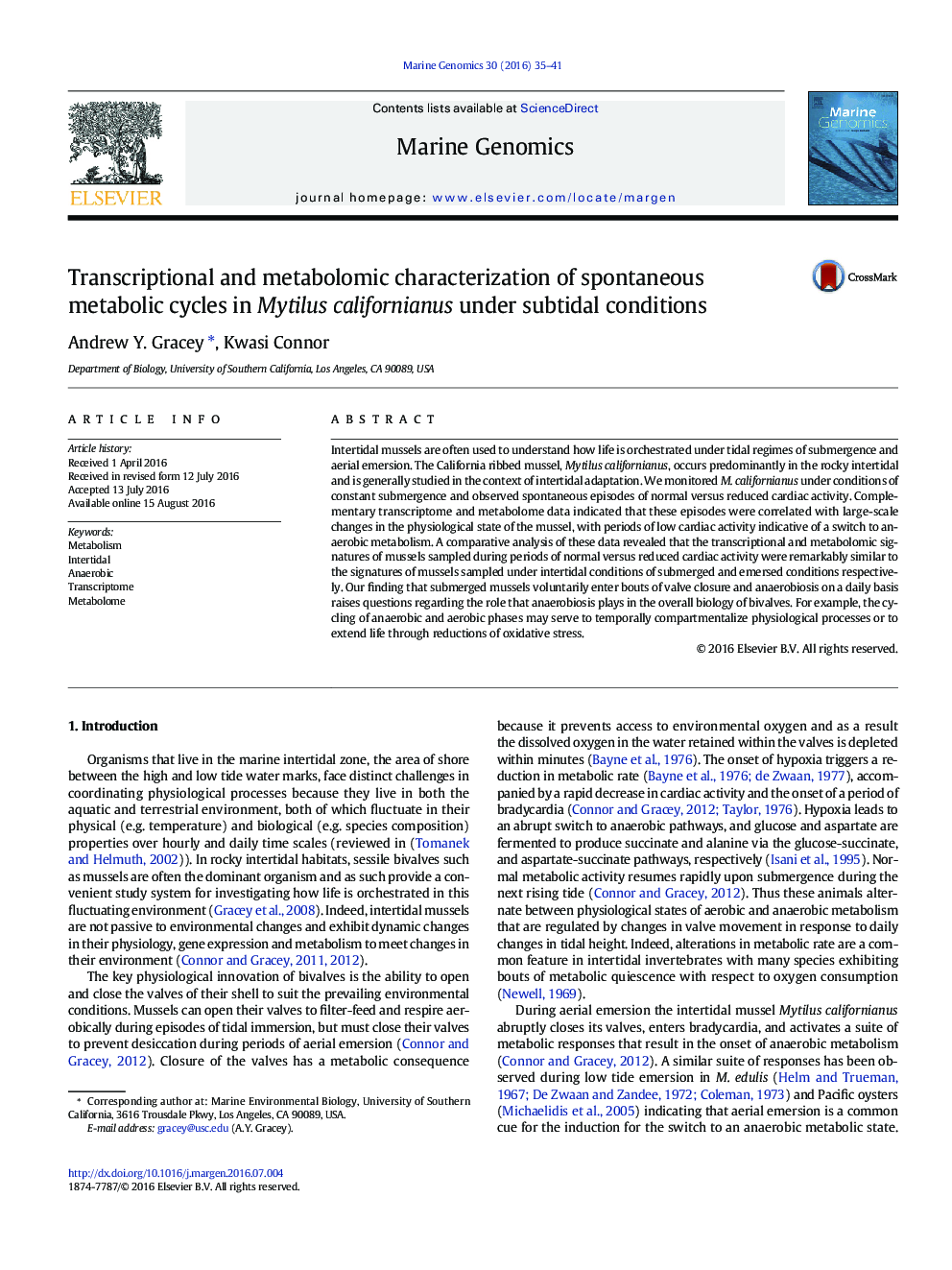| Article ID | Journal | Published Year | Pages | File Type |
|---|---|---|---|---|
| 5518285 | Marine Genomics | 2016 | 7 Pages |
Intertidal mussels are often used to understand how life is orchestrated under tidal regimes of submergence and aerial emersion. The California ribbed mussel, Mytilus californianus, occurs predominantly in the rocky intertidal and is generally studied in the context of intertidal adaptation. We monitored M. californianus under conditions of constant submergence and observed spontaneous episodes of normal versus reduced cardiac activity. Complementary transcriptome and metabolome data indicated that these episodes were correlated with large-scale changes in the physiological state of the mussel, with periods of low cardiac activity indicative of a switch to anaerobic metabolism. A comparative analysis of these data revealed that the transcriptional and metabolomic signatures of mussels sampled during periods of normal versus reduced cardiac activity were remarkably similar to the signatures of mussels sampled under intertidal conditions of submerged and emersed conditions respectively. Our finding that submerged mussels voluntarily enter bouts of valve closure and anaerobiosis on a daily basis raises questions regarding the role that anaerobiosis plays in the overall biology of bivalves. For example, the cycling of anaerobic and aerobic phases may serve to temporally compartmentalize physiological processes or to extend life through reductions of oxidative stress.
